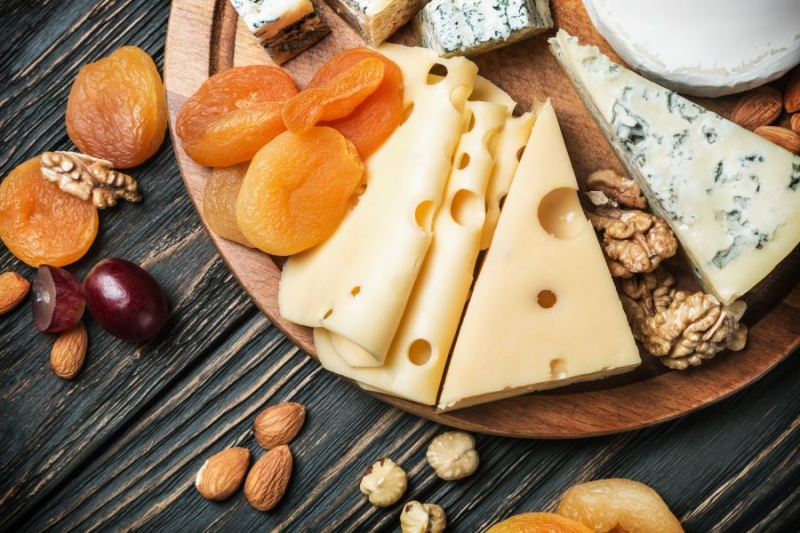Contents
- 1 UPF categories
- 2 Not all are created equal
- 3 UPF breads, biscuits, breakfast cereals, sweets, desserts and plant-based alternatives were associated with a lower type 2 diabetes incidence.Expert feedback
- 4 The study uses high-quality statistical analyses but cannot determine causation as an observational study.Causation issue
18 Sep 2024 — Higher consumption of ultra-processed foods (UPFs) is associated with an increased risk of developing type 2 diabetes. At the same time, researchers discovered that people can lower this risk by consuming less processed foods instead. A new study analyzed UPF intake and health outcomes for 311,892 individuals from eight European countries over an average of 10.9 years.
The UK-based researchers also identified UPF groups associated with the highest diabetes risk — savory snacks, animal-based products like processed meats, ready meals and sugar-sweetened and artificially-sweetened beverages.
“We know that UPFs are associated with a higher risk of certain diseases such as type 2 diabetes. As expected, our findings confirm this link and show that every 10% increase in the diet from UPF increases the risk of developing type 2 diabetes considerably,” says Samuel Dicken, first author of the study from the Division of Medicine at University College London (UCL), UK.
“Most studies to date only consider UPF as a whole, but we also suspect that there may be different risks associated with different types of UPF, and the risks of other processing groups have not been well researched. Our analysis goes a step further than previous studies by looking at all four processing groups in the NOVA classification to gauge the impact on type 2 diabetes risk when we substitute UPFs with less processed foods and nine UPF subgroups.”
“The good news is that replacing UPF with less processed foods was associated with a reduced type 2 diabetes risk.”
UPF categories
The study, published in The Lancet Regional Health Europe, was a cohort analysis of the European Prospective Investigation into Cancer and Nutrition (EPIC). The team assessed dietary intake at baseline through questionnaires and classified foods into processing levels through the NOVA classification.
NOVA divides foods into four groups — unprocessed or minimally processed foods such as eggs or fruit; processed culinary ingredients like salt, butter and oil; processed foods such as canned fruits, artisanal bread, beer and cheese and UPFs, which include ready-to-eat mixed dishes, sweets, desserts and savory snacks.

Processed foods, one level under UPFs, include preserved fruits and vegetables, artisanal bread, beer and cheese.The researchers analyzed the intake of foods at different processing levels with the incidence of type 2 diabetes mellitus. Of the 311,892 participants, they identified 14,236 cases of type 2 diabetes.
They found that every 10% increase in total daily food intake from UPF was linked to a 17% incident in type 2 diabetes.
However, each 10% increment of UPF in the diet that is substituted with minimally processed foods and processed culinary ingredients reduced the incidence of type 2 diabetes by 6%. Moreover, substituting 10% of UPFs for processed foods reduced the incidence of diabetes risk by 8%.
Not all are created equal
Researchers increasingly debate the validity of processing levels to assess a food’s healthiness as not all UPFs have the same health impact. In the current study, the researchers found that not all UPF food groups were linked to a higher diabetes incidence.
High proportions of sweetened beverages, savory snacks, ready meals and animal-based products contributed to overall type 2 diabetes risk. For individuals with the highest UPF consumption (23.5% of the total diet), sweetened beverages accounted for nearly 40% of UPF intake and 9% of the overall diet.
However, other food groups, such as UPF breads, biscuits and breakfast cereals, sweets and desserts and plant-based alternatives, were associated with a lower type 2 diabetes incidence.
Professor Rachel Batterham, senior author of the study from UCL Division of Medicine, comments: “The UPF subgroup analysis in this study has been revealing and confirms that not all foods categorized as UPF are alike in terms of the health risks associated with them.”
“Breads and cereals, for example, are a staple of many people’s diets. Based on our results, we should treat them differently to savory snacks or sugary drinks regarding the dietary advice we provide.”

UPF breads, biscuits, breakfast cereals, sweets, desserts and plant-based alternatives were associated with a lower type 2 diabetes incidence.Expert feedback

Kevin McConway, emeritus professor of applied statistics at the Open University, UK, comments that the researchers address “to some extent” the causes of these differences between various UPF subgroups.
He notes that the paper accounts for other explanations for these associations, such as high saturated fat, sugar and salt content in UPFs. In addition, the paper looks at an overall measure of diet quality.
“In statistical analyses that make adjustments for these things, the researchers found that an association between UPF consumption and diabetes risk did not disappear, so there seems to be something going on beyond these measures of food content and quality.”
“This does not mean that the processing of UPFs is definitely part of the problem, rather than only what the foods contain,” McConway cautions. “It remains possible that some other aspect of their ingredients than their content of fats, sugar and salt is behind the observed association — or indeed that the associations aren’t causal at all.”
“This new study uses more sophisticated statistical analyses than studies of this type usually do. I think the statistical analyses are generally of high quality, and the extra information from the additional statistical analyses is helpful.

The study uses high-quality statistical analyses but cannot determine causation as an observational study.Causation issue

Although McConway notes that the study uses sophisticated, high-quality statistical analyses, it suffers from issues that arise in all observational studies, meaning that “we can’t conclude what is causing what.”
“The differences in diabetes risk, associated with consumption of different food types, might be caused by the food types or might be caused by other differences between the people that have different diets,” he explains. “One can never be even approximately sure that all relevant factors have been adjusted for, or even that one has data on everything relevant.”
He adds that categorizing people’s diets based on processing levels may not be accurate. “Most long-term cohort studies of associations between UPFs and chronic diseases rely on measures of food intake that use data collected before the notion of UPFs had been developed and published.”
“That’s simply because chronic diseases generally take a long time to develop. Hence, the participants have to be followed up for a long time to get enough diagnoses of the health issues to be able to analyze the data effectively.”
Moreover, McConway says that the study measured people’s diets only when they first entered, not accounting for dietary changes over time or the changed composition of processed foods. Although the study accounts for some food composition data and overall diet quality, it didn’t address other food characteristics.
He notes: “Though it is a good study in many respects and does throw more light on what might be behind the association between UPF consumption and poor health, the new study leaves a great number of questions completely unanswered.”
The UCL team is currently conducting a trial to assess the impact of UPF versus minimally processed food diets that meet healthy diet guidance, which they note will further clarify the results of this study. The results of this trial are expected to be published in 2025.
By Jolanda van Hal

